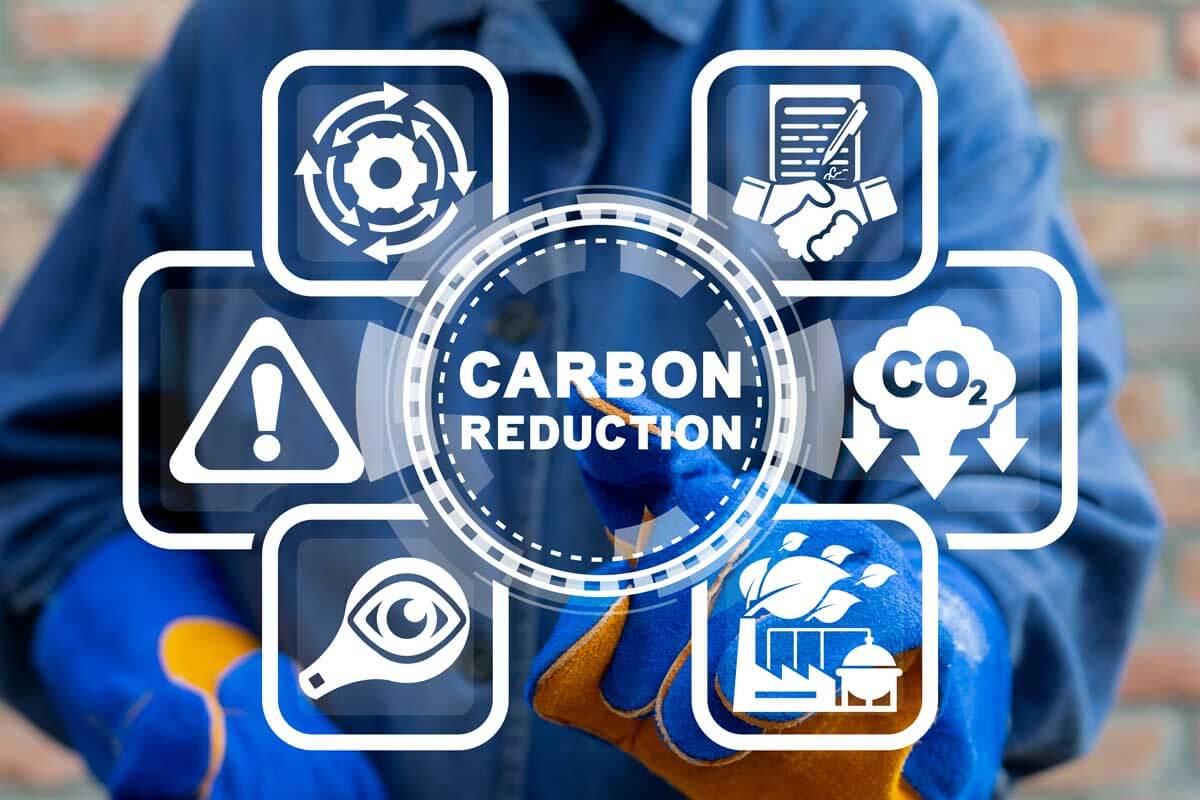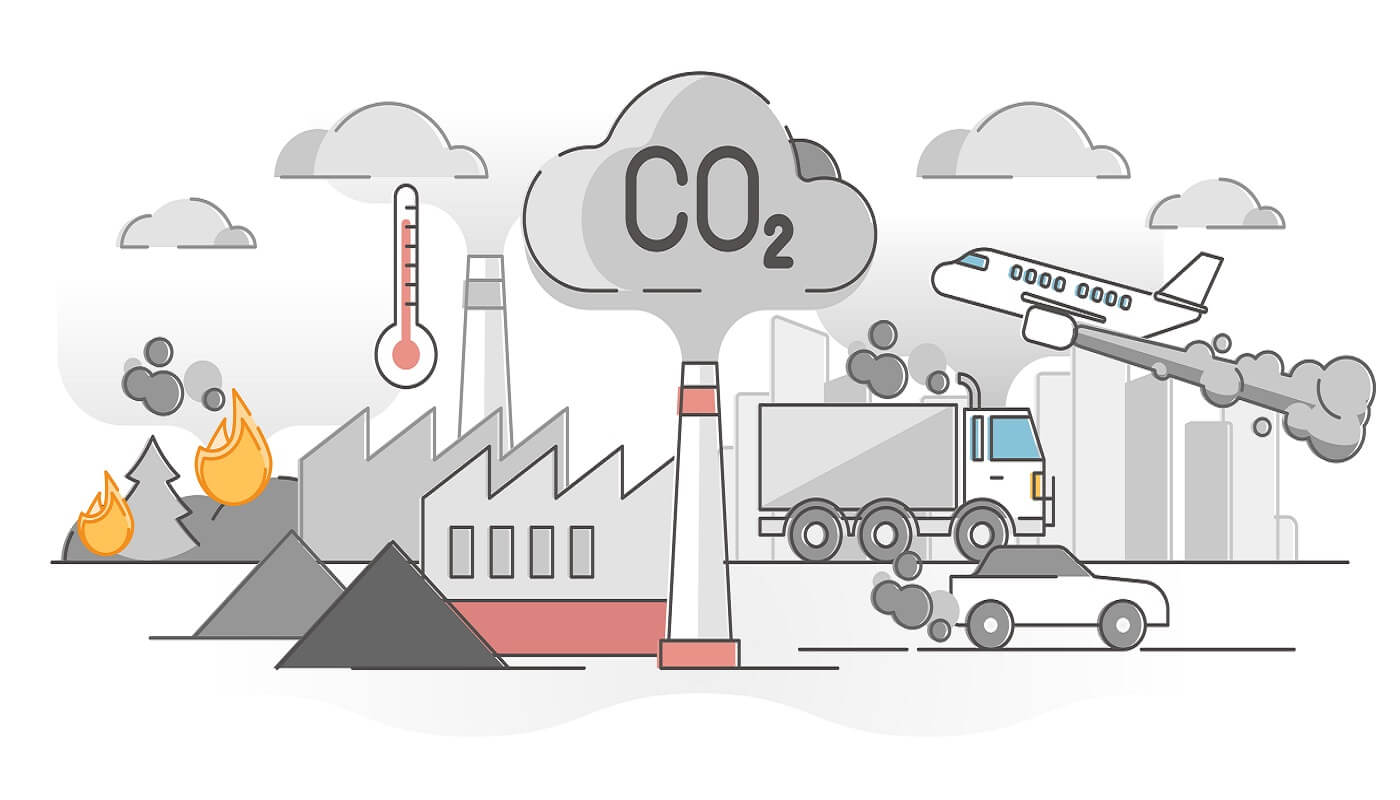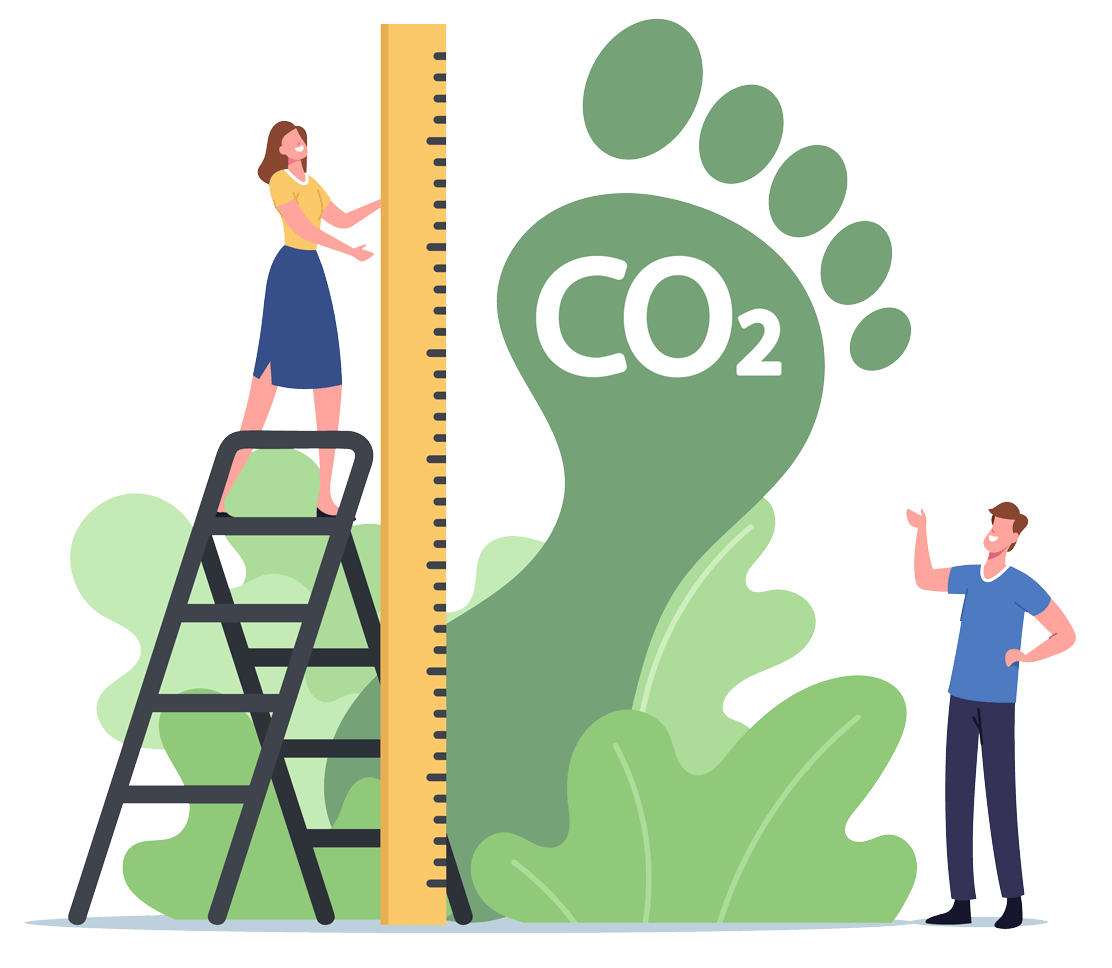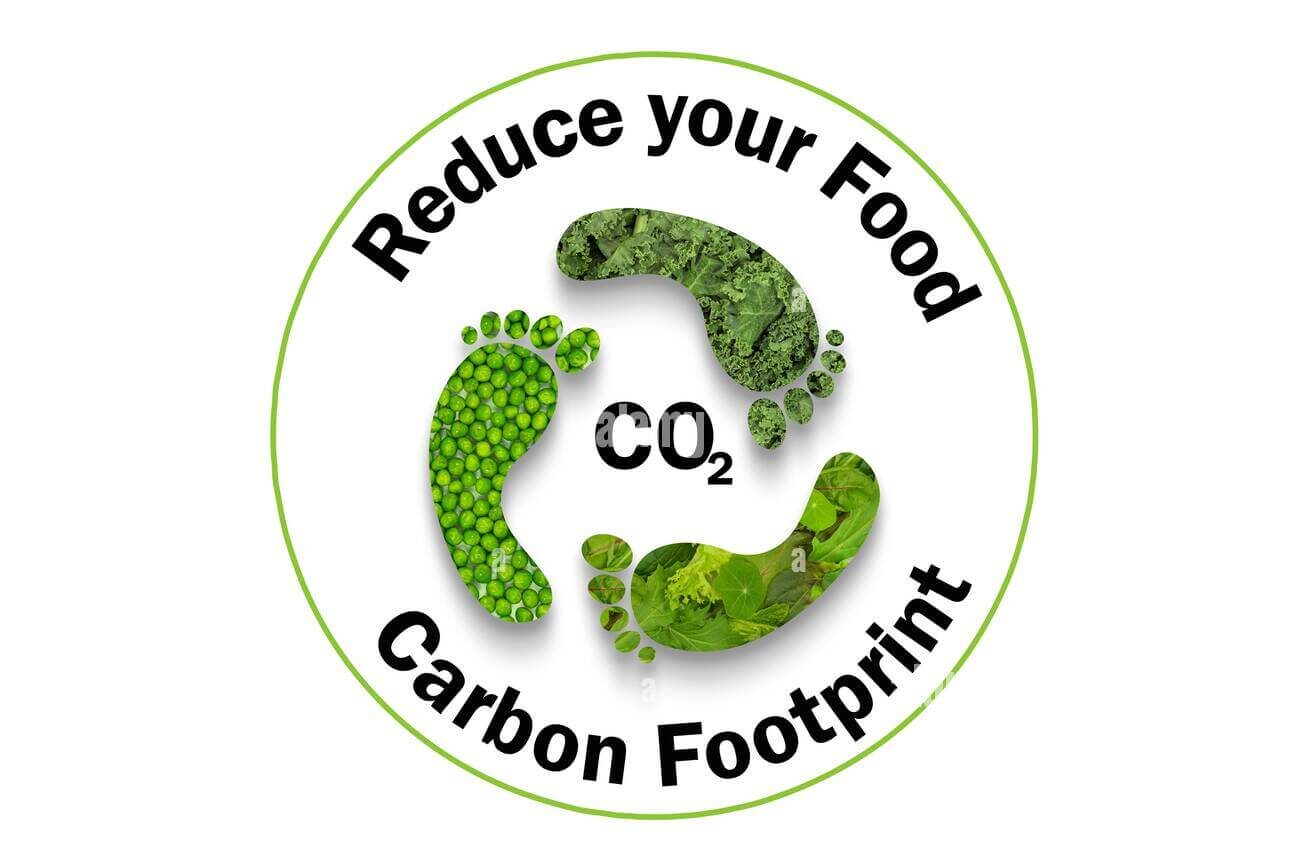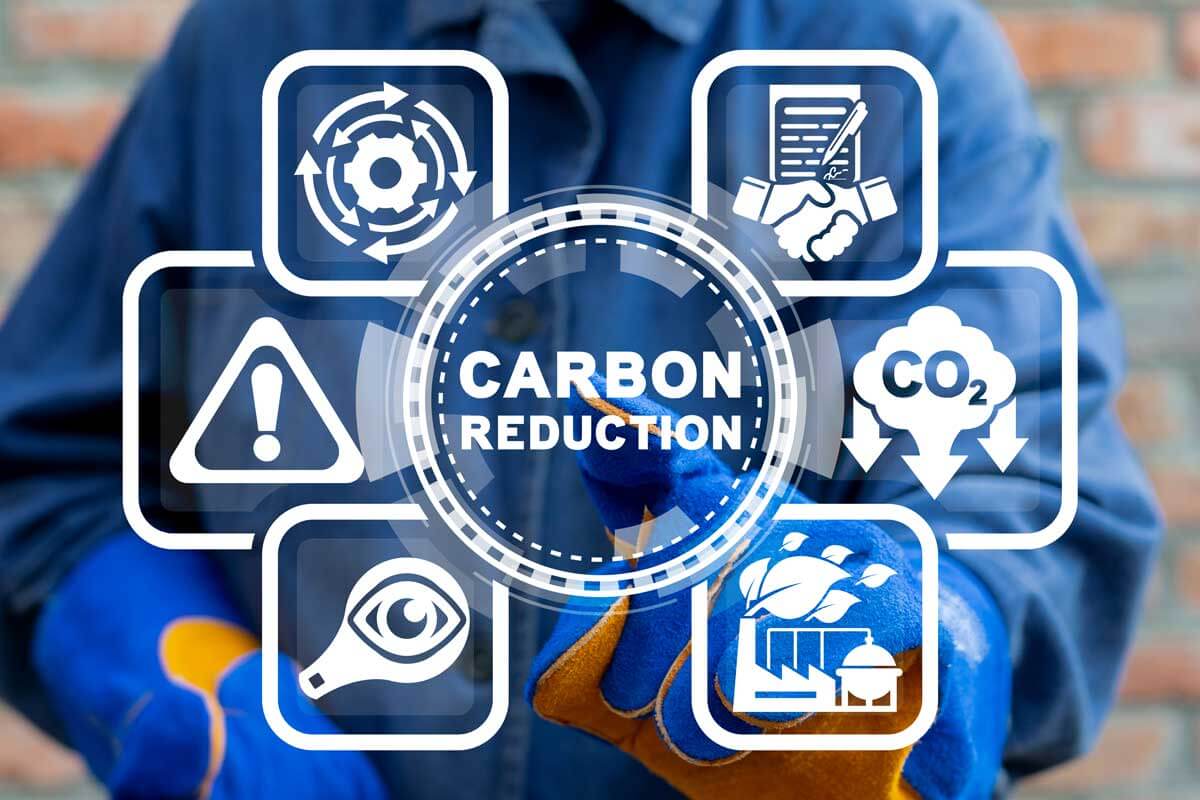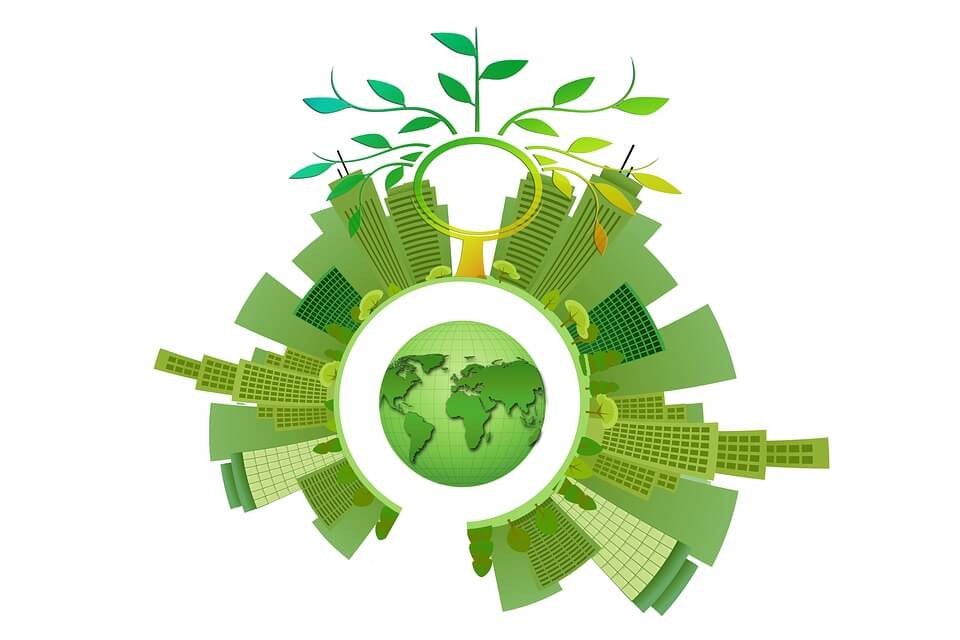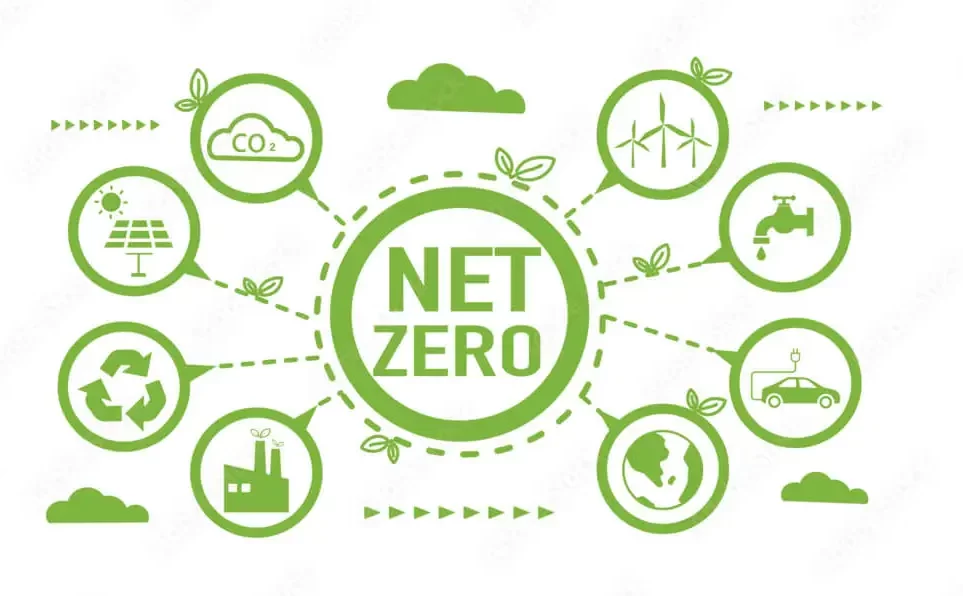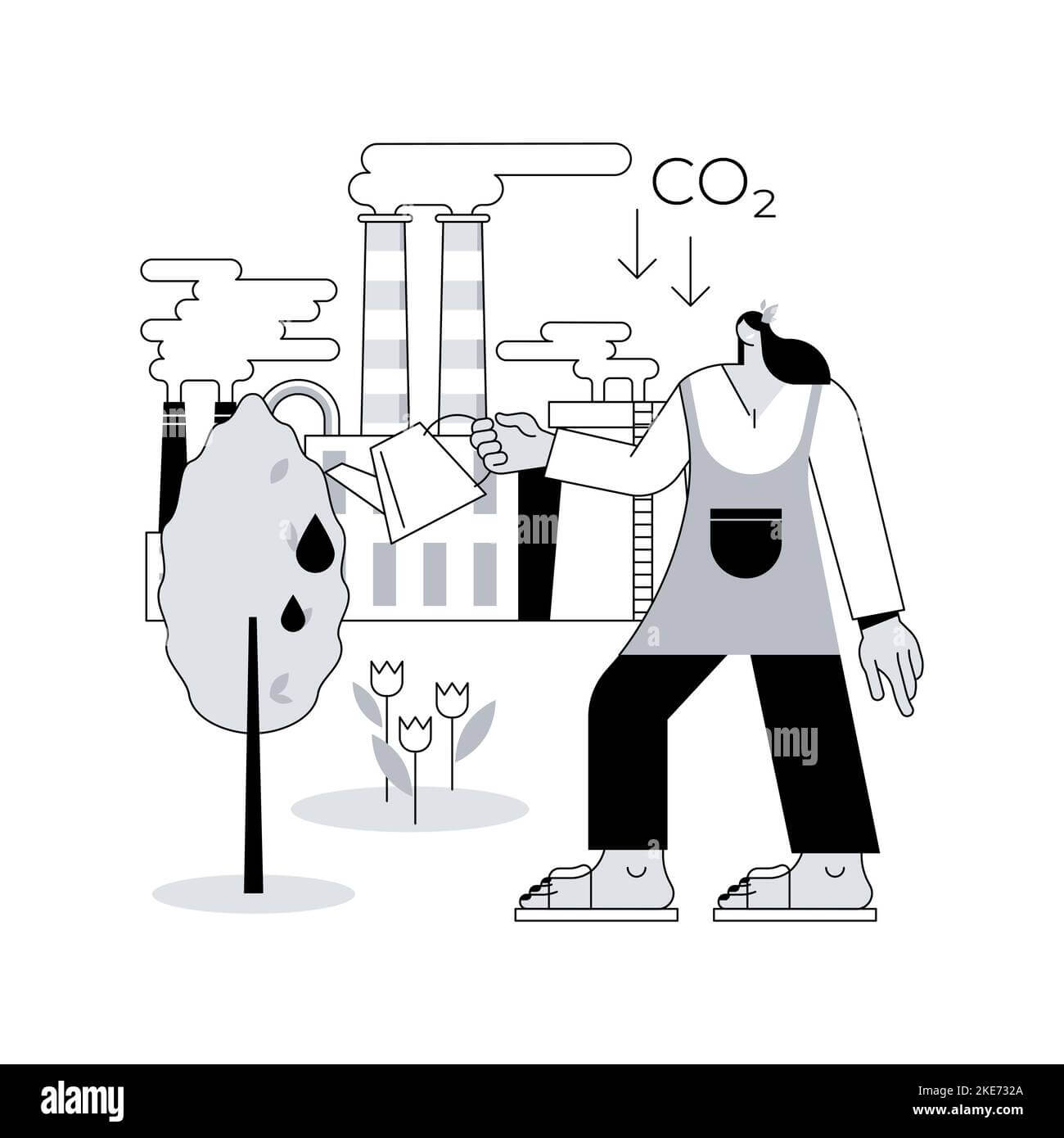
Carbon Footprint Types

Have you ever wondered how much impact your lifestyle has on the environment? In a world increasingly aware of the importance of sustainability, understanding our carbon footprint has become crucial.
But what does this term really mean?
We will explain the different types of emissions that contribute to this growing global problem.
You’ll discover how our daily actions, from our commute to work to the electricity we use at home, have a significant impact on climate change.
What you will learn from this article about the types of footprint are:
- Definition and explanation of direct, indirect, embodied and product carbon footprints
- Examples of activities that contribute to each type of carbon footprint
- Strategies to reduce each type of carbon footprint in the unknown niche.
Direct Carbon Footprint
Definition and explanation of direct carbon footprint
Refers to emissions resulting from activities that occur within the control or ownership of a company or individual.
These emissions are usually associated with the burning of fossil fuels, such as:
- Coal
- Oil
- Gas.
Direct carbon emissions are usually classified as Scope 1 emissions under the Greenhouse Gas Protocol.
Examples of activities that contribute to direct carbon emissions
In various industries and sectors, carbon emissions can be generated through a variety of activities.
For example, in manufacturing processes, the combustion of fossil fuels for energy would contribute to climate change.
Similarly, in transportation, the combustion of gasoline in vehicles would also contribute to the carbon footprint.
Strategies to reduce the direct carbon footprint
To reduce the direct carbon footprint, several strategies can be applied:
- Energy efficient practices: Implementing energy efficient practices can significantly reduce direct carbon emissions.
This can be achieved by optimizing processes, upgrading equipment to more energy efficient models, and minimizing energy consumption wherever possible. - Adoption of renewable energy sources: Transitioning to renewable energy sources, such as solar or wind, can have a significant impact on reducing this issue.
By replacing fossil fuel-based energy sources with renewable alternatives, businesses and individuals can significantly reduce their carbon footprint.
Indirect Carbon Footprint
Definition and explanation of indirect carbon footprinting
While the direct carbon footprint is associated with emissions from activities under the control or ownership of an entity, the indirect carbon footprint is emissions that occur as a result of the activities of others.
These emissions are often classified as Scope 2 and Scope 3 emissions.
Examples of activities that contribute to indirect carbon emissions.
For example, if an organization purchases electricity from the grid, the emissions associated with the generation of that electricity would contribute to the indirect carbon footprint.
Similarly, if the organization relies on transportation services, the emissions resulting from the operation of vehicles used for delivery or transportation.
Strategies to reduce indirect carbon footprint
- Sustainable transportation options: Promoting sustainable transportation options, such as electric vehicles or public transportation, can help reduce CO2 emissions.
Encouraging employees or customers to use more environmentally friendly modes of transportation or encouraging carpooling can help reduce this problem.
- Waste management and recycling initiatives: Implementing effective waste management and recycling initiatives can have a definite impact on reducing the CO2 footprint.
By diverting waste from landfills and promoting recycling, businesses and individuals can reduce the emissions associated with waste decomposition.
In addition, composting organic waste and exploring innovative waste-to-energy solutions can further contribute to emission reduction efforts.
Embodied Carbon Footprint
Definition of embodied carbon footprint
Refers to the emissions associated with the entire life cycle of a product or infrastructure.
This includes the extraction of:
- Raw materials
- Manufacturing processes
- Transportation
- End-of-life disposal.
Understanding and addressing the embodied carbon footprint is crucial to achieving sustainability goals.
Examples of activities contributing to embodied carbon emissions
One of the actions that boost CO2 emissions are:
- Construction
- Extraction of raw materials
- Concrete
- Steel
- Energy-intensive manufacturing processes.
Strategies for reduction
1. Sustainable design principles: This involves the use of less carbon-intensive materials, design optimization to reduce material use, and consideration of life cycle impacts when selecting materials.
- Use of green materials: This is summarized as using recycled or reclaimed materials, exploring alternatives to carbon-intensive materials, or choosing materials with a lower environmental impact.
Product carbon footprint
Explanation of product carbon footprinting
It is expressed as the emissions associated with the entire life cycle of a product, including its production, distribution, use and disposal.
Calculating a product’s footprint involves considering the emissions associated with each stage of the product’s life cycle.
This can be done using established methodologies, such as Greenhouse Gas Protocol or Life Cycle Assessment (LCA).
By analyzing emissions at each stage, companies and individuals can identify hot spots and prioritize reduction efforts.
Strategies to reduce the carbon footprint of products
- Efficient manufacturing processes: Optimizing manufacturing processes to minimize energy consumption and waste generation generate abatement to climate change.
This may involve applying lean manufacturing principles, investing in energy-efficient equipment and adopting sustainable practices throughout the production process. - Sustainability initiatives in the supply chain: Collaborate with suppliers and implement sustainability initiatives in the supply chain.
This may involve selecting suppliers with strong environmental credentials, promoting sustainable practices throughout the supply chain and exploring local sourcing opportunities.
Scope 1, 2 and 3 Carbon Emissions
Overview of Scope 1, 2 and 3 emissions
Scope 1, 2 and 3 carbon emissions are used to classify and measure the different types of emissions a company produces.
These categories, defined by the Greenhouse Gas Protocol, help companies identify areas for emissions reductions and develop specific strategies.
Relevance of these scopes to different types of carbon footprints
Type of Issue | Definition | Examples | Carbon Footprint Impact | Reduction Strategies |
Scope 1 | Direct emissions owned or controlled by the company. Includes on-site combustion and process emissions. | Combustion of fuels in facilities, industrial processes. Emissions from company vehicles. | They contribute significantly to the direct carbon footprint. |
|
Scope 2 | Indirect emissions resulting from the generation of purchased electricity, heat or steam, linked to grid electricity consumption. | Purchased energy, electricity used for operations, purchased heat | They affect the indirect carbon footprint, related to energy consumption. |
|
Scope 3 | Indirect emissions along the entire value chain, including upstream and downstream activities. Also business travel, employee commuting, transportation of goods. | Transportation of employees production of raw materials distribution of products, customer movements. | They affect indirect carbon footprints and are linked to company activities outside its organizational boundaries. |
|
Identifying and categorizing emissions in each area
To obtain a comprehensive understanding of the carbon footprint, it is essential to identify and categorize emissions in each scope.
This involves assessing direct emissions from on-site activities (Scope 1), indirect emissions from purchased electricity (Scope 2) and a broad range of upstream and downstream emissions (Scope 3).
Examples of emission reduction strategies for each area
- Transition to renewable energy sources: This includes the installation of solar panels, the use of solar photovoltaic energy, the use of renewable energy and geothermal energy, all of which are in Scope 1.
- Apply energy efficiency practices: Reducing energy consumption and improving energy efficiency can help reduce both Scope 1 and Scope 2 emissions.
This may involve optimizing processes, upgrading equipment to more energy efficient models, and implementing energy management systems.
- Promote sustainable transportation options: Addressing Scope 3 emissions can be achieved by promoting sustainable transportation options.
This may involve encouraging employees or customers to use public transportation, offering incentives for car sharing, or supporting the use of electric vehicles.
- Supply chain sustainability initiatives: To address upstream and downstream emissions associated with Scope 3, companies can work with suppliers to implement supply chain sustainability initiatives.
This may involve selecting suppliers with strong environmental credentials.
Questions and Answers
What is a carbon footprint and why is it important to know?
A carbon footprint measures greenhouse gas emissions from a person or organization. It’s crucial to understand our environmental impact.
Who is responsible for reducing carbon footprints?
Individuals, businesses, and governments all have a role to play in reducing carbon footprints.
What are the different types of carbon footprints?
There are primary, secondary, and tertiary carbon footprints, each measuring different sources of emissions.
How can I calculate my carbon footprint?
Use online calculators or consider factors like energy consumption, transportation, and waste production.
What are some ways to reduce carbon footprints?
Adopt sustainable practices like using renewable energy, minimizing waste, and choosing eco-friendly transportation.
But isn’t reducing carbon footprints expensive?
While initial costs may exist, long-term savings and environmental benefits outweigh the expenses.
What causes carbon footprint? From everyday activities to industrial impacts, learn how to mitigate your environmental footprint effectively."
Understand carbon footprint units like CO2e and kilograms to measure and reduce your environmental impact effectively.
Explore the different carbon footprint types—direct, indirect, embodied, and product—and learn strategies to reduce your environmental impact effectively.
Learn how to reduce your personal carbon footprint with practical strategies on energy, transportation, diet, and waste. Make a sustainable impact today.
Discover practical tips on reducing your water carbon footprint. Learn about water-saving strategies and their impact on climate change in this enlightening guide.
Offset your carbon footprint effectively with expert guidance. Understand the impact of your daily activities on emissions, calculate your footprint accurately, and support reputable offset projects.
Learn practical ways to reduce your carbon footprint & fight climate change. From energy conservation to sustainable transportation & eco-friendly diets, take steps for a greener future!
The secrets of reducing your carbon footprint in products. Learn the importance, calculation methods, and actionable strategies for a sustainable future. Dive in now!
Sustainable strategies to shrink your carbon footprint. Learn eco-friendly practices for a greener lifestyle. Act now for a better world!
Ecuador's Zero Carbon Programme is a testament to the country's commitment to sustainability, setting a global example. This guide highlights the program's strategies, benefits, and how businesses can align with these green initiatives.
Discover the importance of Carbon Reporting in our analysis of Carbon accounting. Learn how to communicate your sustainability efforts clearly and transparently. Read more
Global Net Zero Programs leading the charge towards sustainability. From Latin America's innovative policies to the EU's Green Deal, this guide illuminates the path to a greener future for businesses, policymakers, and individuals.

